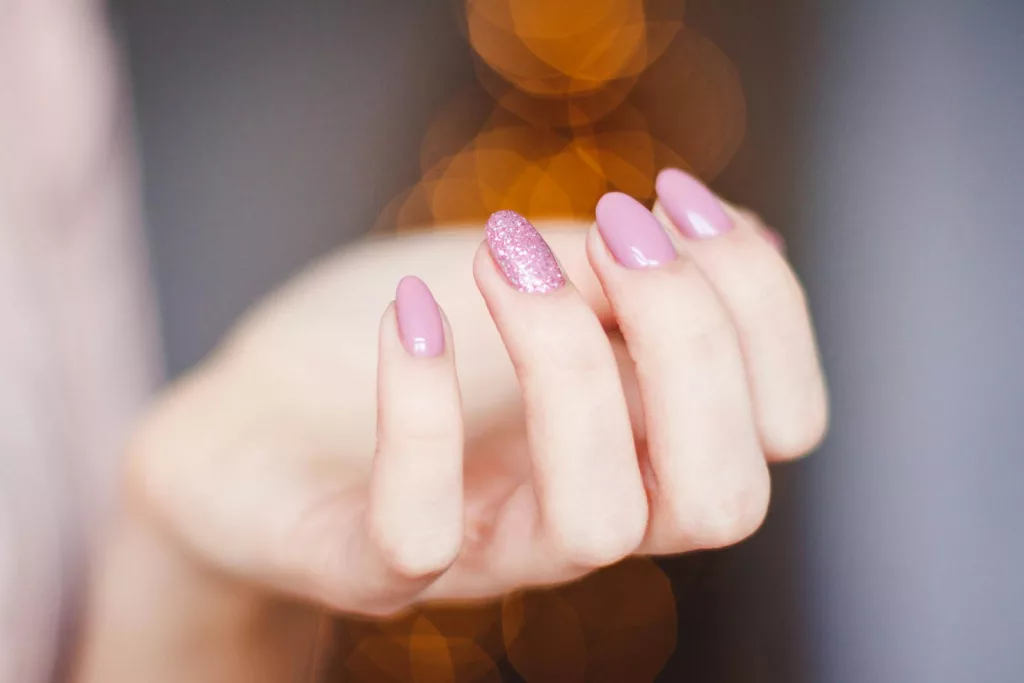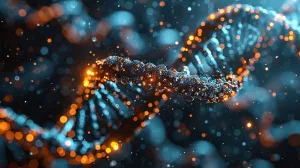The Fascinating Role of Nails: Evolution and Function in Human Biology

Nails are an integral part of the human body, yet their significance often goes unnoticed until there’s a problem. Whether it’s clipping them, painting them, or observing them as indicators of health, nails play a key role in our daily lives. But why do we have nails? This article delves deeply into the evolutionary, biological, and practical purposes of fingernails and toenails, exploring how they have adapted over time to serve both functional and protective roles, as well as their significance in social and cultural contexts.
The Evolutionary Origins of Nails
Fingernails and toenails are believed to have evolved from claws, a feature that is still prominent in many mammals, reptiles, and birds. While claws are primarily used for climbing, digging, and hunting, nails in primates, including humans, have taken on different roles as our ancestors adapted to life in trees and eventually on the ground.
Transition from Claws to Nails
The shift from claws to nails is closely linked to the evolution of primates. Early primates developed nails instead of claws to better grasp branches and manipulate objects. Nails provided a broader surface area for the tips of the fingers and toes, enhancing grip and precision. This adaptation proved crucial for activities like foraging, climbing, and using tools—skills that required fine motor control.
Unlike claws, which limit the range of motion in fingers and toes, nails allowed for greater flexibility and sensitivity. This evolutionary advantage enabled primates to interact with their environment in more complex ways, laying the foundation for advanced behaviors such as tool use, social grooming, and intricate manual tasks that required precision. Additionally, nails enhanced the ability to peel fruits, scratch surfaces for exploration, and communicate through gestures, further improving survival and social bonding.
Nails in Human Evolution
As humans evolved, the functional importance of nails expanded beyond climbing and foraging. With the advent of tool-making and more intricate manual tasks, nails became essential for precision and protection. Their presence safeguarded the sensitive tips of our fingers and toes while also serving as a counterforce for enhanced tactile sensation. Furthermore, nails provided evolutionary advantages in communication and self-expression, allowing early humans to convey social cues through gestures or grooming behaviors. Nails also supported the creation of tools, as they offered reinforcement for delicate but firm grips during intricate crafting processes.
Nails’ multifunctionality contributed to their preservation through evolutionary history. From aiding in everyday survival tasks to serving as symbols of status and hygiene in early human societies, nails gradually became more than just a physical feature—they became an integral part of human identity and interaction.
The Structure and Biology of Nails
To understand the purposes of nails, it’s important to examine their structure and how they grow. Nails are made primarily of keratin, a tough, fibrous protein also found in hair and skin. This composition makes nails durable yet flexible, ideal for their multifaceted roles.
Key Components of Nails
- Nail Plate: The hard, visible part of the nail that provides protection and support. It is made up of tightly packed keratin cells, giving it a durable and resilient quality.
- Nail Bed: The skin beneath the nail plate, rich in blood vessels that nourish the nail and give it its pinkish color. The nail bed also plays a role in anchoring the nail securely and ensuring even growth.
- Cuticle: The thin layer of skin at the base of the nail, protecting the area where new nail cells are formed. This barrier helps prevent infection and acts as the first line of defense against environmental threats.
- Lunula: The crescent-shaped, whitish area at the base of the nail, which is part of the matrix where nail growth begins. Its size and visibility can vary among individuals but often signifies the health of the nail.
- Matrix: The hidden part of the nail beneath the cuticle, responsible for producing new nail cells. The matrix plays a vital role in nail regeneration; damage to this area can result in permanent changes to nail growth or structure.
Nail Growth
Nails grow continuously throughout life, with fingernails growing faster than toenails. On average, fingernails grow about 3 millimeters per month, while toenails grow approximately 1 millimeter per month. Factors such as age, health, and nutrition can influence nail growth rates. For example, nails tend to grow faster during warmer months and slower with age. Illness or trauma can also temporarily halt nail growth, resulting in visible ridges or changes in texture.
Hormonal changes, such as during pregnancy, can accelerate nail growth, while deficiencies in vitamins like biotin or zinc can weaken nail structure and slow growth. The intricate balance of internal health and external care underscores the biological complexity of nails.
Functional Purposes of Nails
Nails serve a variety of purposes that contribute to our overall functionality, well-being, and social interactions. These purposes can be broadly categorized into protection, precision, communication, and aesthetics.
Protection
Nails act as protective shields for the delicate tips of our fingers and toes. These areas contain a high density of nerve endings, making them highly sensitive to touch and pain. The nail plate provides a sturdy barrier against physical trauma, preventing injuries that could compromise the fingertips or toes. Additionally, the hard surface of nails prevents external factors, such as dirt and bacteria, from penetrating the skin beneath, thereby reducing the risk of infection.
Toenails, in particular, protect the tips of our toes from impacts and pressure, which is especially important during activities like walking, running, or wearing tight shoes. Without nails, these vulnerable areas would be more prone to bruising, cuts, and infections. In prehistoric times, this protective function would have been critical for survival, especially in harsh terrains where sharp objects, rough surfaces, and environmental hazards were common.
Precision and Manipulation
Nails enhance the functionality of our hands by providing a counterforce to the fingertips. This counterforce improves our ability to grasp, pinch, and manipulate small objects. Activities such as peeling fruit, picking up coins, opening containers, or untying knots would be significantly more challenging without nails.
In addition, nails amplify tactile feedback by stabilizing the fingertips, allowing for greater precision in fine motor tasks. This is particularly important in activities that require delicate control, such as writing, sewing, or playing musical instruments. For surgeons, artists, and craftspeople, nails play an essential role in maintaining the dexterity required for their professions. They also assist in scratching itches, removing small debris, and performing subtle gestures that enhance daily functionality.
Communication and Aesthetics
Beyond their functional roles, nails also serve as tools for communication and self-expression. In many cultures, the appearance of nails is a reflection of personal hygiene, health, and style. Painted nails, nail art, and manicures are common ways individuals enhance their appearance and convey their personality. Historically, elaborate nail decorations have been used to signify social status or cultural identity, from ancient Egyptian henna-stained nails to the long, ornate nails of Qing dynasty aristocrats.
Nails can also provide subtle nonverbal cues during social interactions. For example, tapping fingernails on a surface may indicate impatience, while clean and well-maintained nails can create a positive impression. The act of grooming nails, such as filing or polishing, can also serve as a calming ritual, promoting mental well-being. Nail care, in this sense, transcends aesthetics to become an important aspect of self-care and social presentation.
Nails as Indicators of Health
The condition of your nails can reveal valuable information about your overall health. Changes in nail color, texture, or growth patterns may signal underlying health issues. For example:
- Pale Nails: May indicate anemia, malnutrition, or poor circulation.
- Yellow Nails: Often associated with fungal infections, diabetes, or respiratory conditions.
- Brittle Nails: Could be a sign of nutritional deficiencies, such as low levels of biotin or iron, or excessive exposure to water and chemicals.
- Ridged Nails: Horizontal or vertical ridges may result from aging, stress, or systemic illnesses.
- Clubbed Nails: Rounded, enlarged nails can be a symptom of lung or heart disease, highlighting the importance of monitoring such changes.
Regular nail care and attention to these signs can help detect potential health problems early, prompting timely medical intervention. For instance, sudden changes in nail growth or appearance should not be ignored, as they may indicate serious health conditions requiring medical attention. Monitoring nails can serve as a simple yet effective tool for assessing overall well-being.
The Importance of Nail Care
Caring for your nails is essential to maintain their health and functionality. Proper nail care includes:
- Trimming: Regularly clipping nails to prevent overgrowth, which can lead to breakage or ingrown nails.
- Moisturizing: Keeping nails and cuticles hydrated to prevent dryness and cracking. Natural oils, such as coconut or almond oil, can be particularly effective.
- Avoiding Harsh Chemicals: Limiting exposure to harsh nail products, such as acetone-based nail polish removers, or cleaning agents that can weaken nails.
- Protecting Nails: Wearing gloves during activities that involve water or chemicals to minimize damage. This is especially important for individuals with jobs or hobbies that require frequent handwashing or contact with irritants.
- Balanced Nutrition: Ensuring a diet rich in vitamins and minerals, including biotin, zinc, and vitamin E, to promote strong, healthy nails.
Healthy nails not only enhance appearance but also ensure their continued effectiveness in performing everyday tasks. Taking proactive steps to care for your nails can also prevent common issues, such as fungal infections or brittle nails, which can compromise their integrity. Nail health, therefore, is a reflection of both internal wellness and external care.
Conclusion
Nails are far more than mere aesthetic features; they are evolutionary adaptations that serve critical functional and protective purposes. From safeguarding sensitive fingertips to enabling precision tasks and reflecting our overall health, nails play a multifaceted role in our lives. By understanding the evolutionary and biological significance of nails, we can better appreciate their importance and take steps to maintain their health and functionality. So, the next time you glance at your nails, remember the incredible evolutionary journey and vital roles they fulfill every day. Whether as tools for manipulation, shields of protection, or indicators of health, nails are an essential component of what makes us human.

